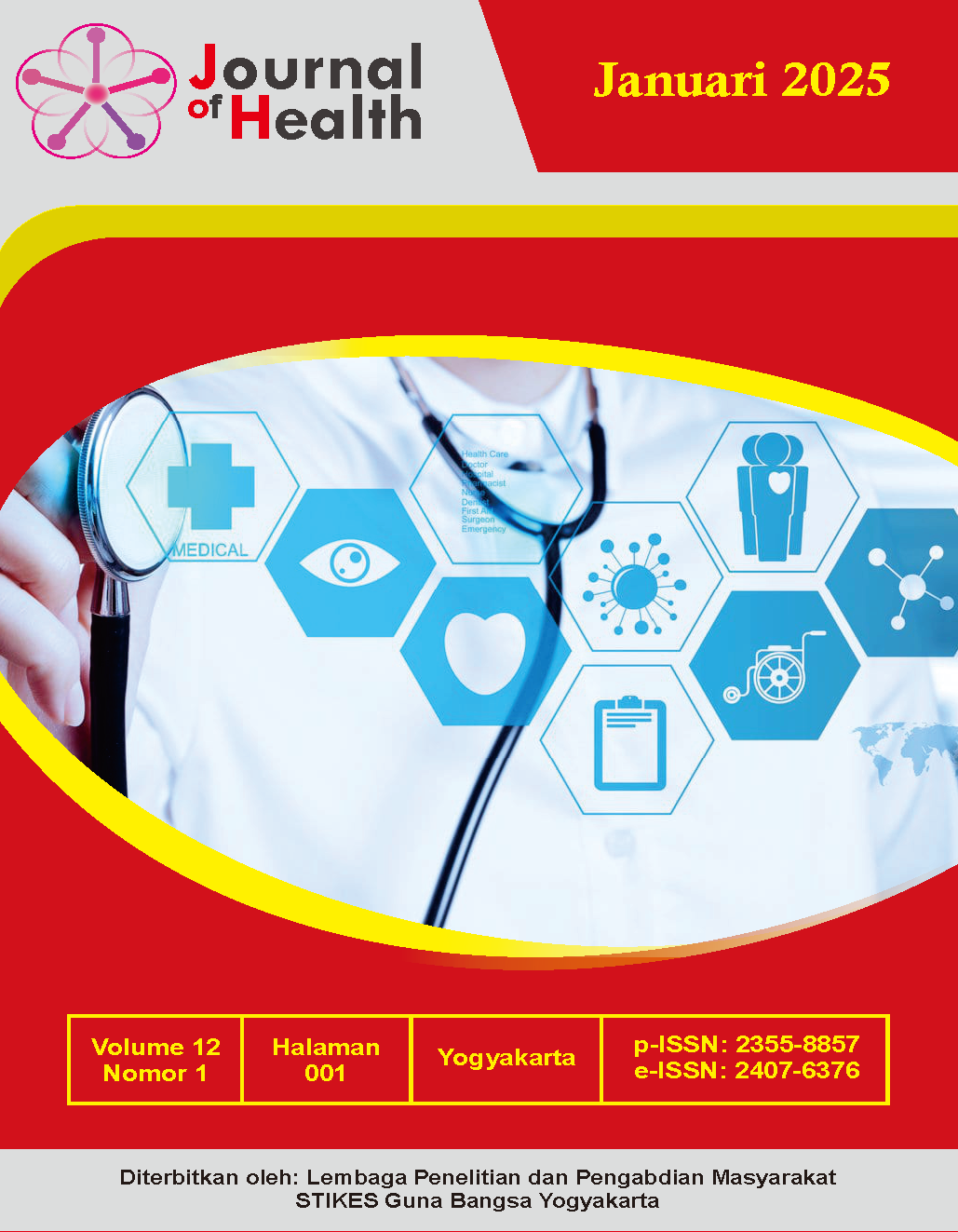The Effect of Lavender Aromatherapy on The Degree of Insomnia In Young Girls at SMAN 1 Godean
Pengaruh Aromaterapi Lavender Terhadap Derajat Insomnia Pada Remaja Putri di SMAN 1 Godean
Abstract
Insomnia is a situation when a person is unable to get adequate sleep, both in quantity and quality, with only short sleep situations, or difficulty sleeping. Sustained insomnia in adolescents can lead to a worsening quality of life and an increased risk of somatic, interpersonal, and psychiatric problems. Lavender aromatherapy can be used to reduce insomnia. Lavender contains linalool which has a calming effect and can induce a person to sleep. This research aims to determine the effect of lavender aromatherapy on the degree of insomnia in the young girls at SMAN 1 Godean. This research is a quasy-experiment with non equivalent control group design. The sample technique was purposive sampling with a total of 34 respondents divided into the experimental group and the control group of 17 respondents. The research instrument used KSPBJ-IRS and observation sheet. Statistical analysis using Wilcoxon test and Mann Whitney U test. The results of the Wilcoxon test in the experimental group obtained a p-value of 0.002 (<0.05) and control group obtained a p-value of 1,000 (>0,05). The results of the Mann Whitney U test obtained a p-value of 0.002 (<0.05). The conclusion is that there is an effect of lavender aromatherapy on the degree of insomnia in young girls at SMAN 1 Godean.
Downloads
Copyright (c) 2025 Giani Tresna Julia, Elvika Fit Ari Shanti

This work is licensed under a Creative Commons Attribution 4.0 International License.
Authors who publish with this journal agree to the following terms:
- Authors retain copyright and grant the journal right of first publication with the work simultaneously licensed under a Creative Commons Attribution License (CC-BY), that allows others to share the work with an acknowledgment of the work's authorship and initial publication in this journal.
- Authors are able to enter into separate, additional contractual arrangements for the non-exclusive distribution of the journal's published version of the work (e.g., post it to an institutional repository or publish it in a book), with an acknowledgment of its initial publication in this journal.
- Authors are permitted and encouraged to post their work online (e.g., in institutional repositories or on their website) prior to and during the submission process, as it can lead to productive exchanges, as well as earlier and greater citation of published work (See The Effect of Open Access).












